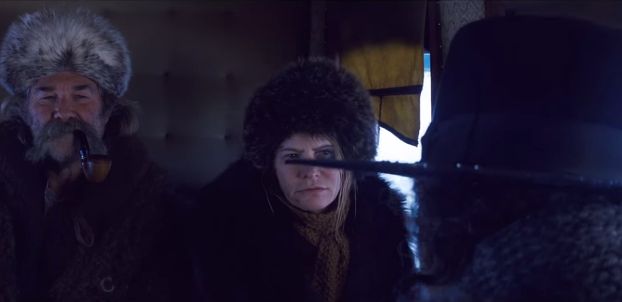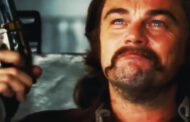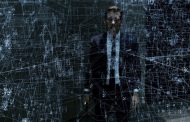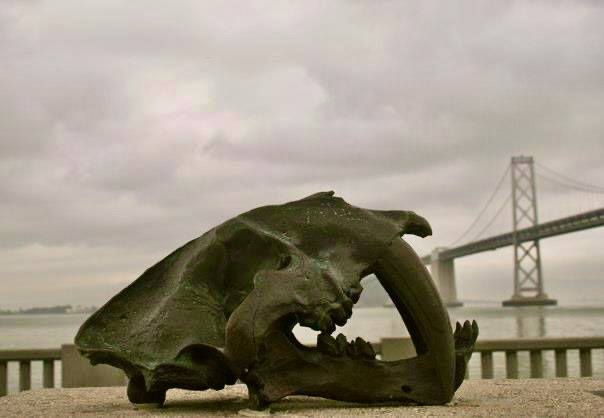Published on http://www.brightlightsfilm.com
“We are not enemies, but friends. We must not be enemies. Though passion may have strained, it must not break our bonds of affection. The mystic chords of memory will swell when again touched, as surely they will be, by the better angels of our nature.” (Abraham Lincoln)
* * *
Nothing remains sacred in Tarantino’s eighth feature film, The Hateful Eight, certainly not the sacred character upon which American Exceptionalism is rooted. This is a film deeply embedded in the unresolved turmoil within the contemporary American cultural imaginary. The thriving mythos of a people forever at war with evil, bringing evildoers to the justice of a hangman’s rope, is brought into a disturbing killing field, back to a fallen world of bloodlust, greed, misogyny and racism.
Revelations summon questions yet unanswered: “Why can’t Americans give up their guns?” “How deep are the roots of racism and misogyny in America that they cannot be reached and destroyed?” “What is the true bounty of blood and violence?” “Where can we find a sign of a moral imperative being fulfilled in war?”
I see the film on the day President Barack Obama is to present his final State of the Union Address and that evening, fresh from viewing Tarantino’s version of the state of the Union just after the War Between the States, I ponder the two stages, past and present. Rather than preface his speech with his assessment of the state of the Union, President Obama waits until the very end to tell us: “The state of the Union is strong.” My immediate responses are, “Maybe” and “In regard to what?”
I am, however, more certain about the roots of this union. Bloody. Very bloody. And maybe bloody because the Union is “strong” where it should be as the Taoists suggest, bendable, or as expressed in the Beatitudes, “meek.” What I realize more certainly is that Tarantino takes us on a shocking, imaginative, and dark journey into the American past, into the id that every State of the Union address works hard to conceal although all the nightmare effects of that past remain alive in the present. It is the changing nightmare, yet somehow always the same, that must be addressed. What The Hateful Eight seeks to do is to enter the abyss and uncover the damages wrought in the past, traumatic damages that infect the present and elude the platform of any politics.
The journey Tarantino takes us on in this film is like a Dantean excursion into the progressively darker reaches of America’s mass psyche. The stagecoach rattling through a snow-filled landscape with a blizzard on the horizon and heading for Minnie’s Haberdashery is a journey from light to darkness, from the purest whiteness of newly falling snow to the black pitch of unwinding circles of violation, abuse, rage, mayhem, mutilation . . . blood and violence. Bullets eventually speak more than words, but words are themselves like angry projectiles that explode all conversations, taking us by surprise though we uneasily anticipate that every occasion, no matter how seemingly everyday and banal, will so explode. And the language, before any gun is fired, is the weapon.
But the whiteness, what is that? The snow is the cover, the façade of purity, of evangelical innocence, of noble exceptionalism; it is the snow of what Lincoln called “the better angels of our nature,” ironically summoning at Gettysburg a side of the American psyche not on display. Neither is it on display in this film. We are on a stagecoach rattling through the persistent snow job that fills American history, the cover-up spin that, like fallen snow, must continue to fall, otherwise it will melt away.

Whiteness in two guises: Daisy on the stagecoach in the snow
These hateful eight, who will taunt, mock, poison, dismember, and shoot each other, have escaped the blizzard and sought refuge in this way station. They were never part of the whiteness; not of it, never the better angels but always like pitch, which as Falstaff reminds Hal in King Henry IV, Part 1, “doth defile” as “doth the company thou keepest.” We are in such company, not a part, but of it. We are already defiled, and that defilement, though covered, is easily observable in the present, in the very present President Obama’s address surveys. We would rather associate ourselves with the “Magnificent Seven,” the Samurai of equitable justice, of selfless humanity, of, in short, noble whiteness. We are not allowed that escape, that sham, in this film.
Amazingly, in such a long film (3 hours, 7 minutes), there are no places to rest, no moments in which we can settle into comforting scenarios already in our minds, no words that do not provoke and conjure, no action that does not unnerve us. All is here to jolt, unsettle, disturb, overwhelm defenses, do violence to pretenses, and dismantle the equilibrium that never existed in our past but is evoked in the present for its own purposes.
“America will be great again” Republican Presidential candidate Donald Trump trumpets, burying a bloody past while at the same time making a campaign promise to spill more blood. If greatness then lies in blood, in the military supremacy that President Obama boasts in his address, then Tarantino’s film takes us to the heart of that greatness. And he takes us further and deeper into the darkness at the root of such a pull toward violence.
Violence, profit, and a societal order of things are quickly connected.

Ruth and Warren
The stagecoach stops for Major Marquis Warren, a bounty hunter with three dead bodies redeemable for $8,000. He joins John “the Hangman” Ruth, also a bounty hunter, who has Daisy Domergue as prisoner redeemable at $10,000. Marquis says it’s safer to shoot the bounty, but Ruth insists on bringing the mean ones to the hangman. It’s a capital punishment that later in the film the hangman Oswaldo Mowbray, who is really outlaw English Pete with a bounty of $15,000 on his head, will tell us upholds a society’s notion of justice. And because it is this man, English Pete, who as an outlaw violates society’s laws, who connects violence with justice, it seems clear that any claims of justice being related to violence and profit are concealing artifice, false illusions that violence and partnership of profit preserve a social order.
At film’s end, in their last act, Marquis and Sheriff Chris Mannix hang Domergue because, as the major puts it, they have no say in their dying but they do have a say in the way Domergue will die. The film has feasted visually on her bruised face, on the blackened eye she sports the first time we see her. She is throughout the film smashed, punched, and elbowed to the face a number of times, once so hard it knocks her out of the stagecoach. After being shot in the leg, she is finally slowly hung from a ceiling beam. We never know what the Domergue gang have done or what the three dead men Marquis has killed have done, but it does not seem that reasons matter when it comes to violence. The violence here is a free-floating performance, sometimes tied to profit but not needful of it. The little we know of Daisy is that she has a brother who has come to rescue her. The only exchange they have reveals their closeness: “How ya’ doing, dummy?” he asked. “Better now I see your ugly face.” Whether we like it or not, this is one of the few signs in the film of “the better angels of our nature.” He’s shot and killed and she’s hung. It seems that “back in the day,” the social order was preserved not only by a bloodlust but by misogyny as well.
 The bonds that dominate in this film, the bonds that are taken up by subsequent generations, are not the bonds of solidarity, of any kind. “Fraternity” is a foreign concept; what is rooted in the American past is distrust and fear of what others may take from what is yours, including your life. John “Hangman” Ruth’s fear of losing his property – his captive, Daisy Domergue, and the $10,000 bounty – structures his entire relationship with others. And that reduction of the social is a bequest to the present that fills the contemporary American landscape as wealth compounds in few places while hard times pursue the many. The person who has $10,000 looks warily at the person who has nothing. The trust and aid, sympathy and empathy, compassion and “love thy neighbor as thyself” descend, in time, to the vitriolic of cyberspace comments and tweets. Minnie Mink, Six-Horse Judy, Sweet Dave, Charley, and Gemma – who are the welcoming characters at Minnie’s Haberdashery – are trusting of the strangers who arrive and are murdered by them. John Ruth and Marquis, however, trust no one and engage others with fists and bullets. Suspicion does not wait long for proof with either man. This is the “dog eats dog” and “war of all against all” brand of humanity that is the present’s inheritance.
The bonds that dominate in this film, the bonds that are taken up by subsequent generations, are not the bonds of solidarity, of any kind. “Fraternity” is a foreign concept; what is rooted in the American past is distrust and fear of what others may take from what is yours, including your life. John “Hangman” Ruth’s fear of losing his property – his captive, Daisy Domergue, and the $10,000 bounty – structures his entire relationship with others. And that reduction of the social is a bequest to the present that fills the contemporary American landscape as wealth compounds in few places while hard times pursue the many. The person who has $10,000 looks warily at the person who has nothing. The trust and aid, sympathy and empathy, compassion and “love thy neighbor as thyself” descend, in time, to the vitriolic of cyberspace comments and tweets. Minnie Mink, Six-Horse Judy, Sweet Dave, Charley, and Gemma – who are the welcoming characters at Minnie’s Haberdashery – are trusting of the strangers who arrive and are murdered by them. John Ruth and Marquis, however, trust no one and engage others with fists and bullets. Suspicion does not wait long for proof with either man. This is the “dog eats dog” and “war of all against all” brand of humanity that is the present’s inheritance.

Tarantino with actors on the set. Photo: Andrew Cooper, SMPSP
© 2015 The Weinstein Company. All Rights Reserved.
Tarantino does not draw back from giving us a display of humanity bereft of all humanity, a watchful circling of wolves ready to dispatch each other at the slightest provocation. The tension of the film is here but also in the way the film provokes the audience into a recognition that they too are bereft of concern and compassion for others, that empathy for others has been replaced by negligence, that others are threatening and therefore to be feared. “I don’t give a damn about them, or you, or your sister, or any son of a bitch in Wyoming for that matter,” General Smithers tells Jody Domergue. That testament captures the feeling of fellowship the film lays down. That it resonates in an audience as the operative brand of humanity in the world they are in does not tie that audience warmly to the film. This amounts to an antagonism between film and audience that shows up in film reviews of all of Tarantino’s work, which sets no boundaries in its laying open the dark bounties of the American mass psyche.
When they are all at Minnie’s Haberdashery, John Ruth and Marquis Warren form a partnership to protect their redeemable bounties from what Ruth sees as possible threats. We have thus an on-the-spot killing or a future hanging as a profit-making business venture pursued consequentially, either because killing has become a profitable trade or because war has made violence a natural way of life. All of this has clearly been genetically transmitted to 21st-century U.S. as bloody violence continues on American streets as well as in wars in the Middle East that linger like radioactive fallout. There is not much distance between that war that serves as the close horizon for all the action in this film, a War Between the States that was the deadliest war in U.S. history, a war in which 750,000 died, and present-day wars. Fought differently but fed by the same wellsprings of bloodlust in the American mass psyche.

Board game based on the war
There is a deconstruction of war in this film as well as a rising cascade of blood, like the Mississippi overflowing, that we cannot escape as easily as we can the blood spilled in city streets and on foreign soil. The war deconstruction begins with Major Marquis Warren describing Sheriff Chris Mannix as one of the Mannix Marauders, “the scourge of South Carolina.,” who, according to John Hangman Ruth, were a “bunch of losers…wrapping themselves in the Confederate flag as an excuse to kill and steal. . . in particular emancipated blacks.” Mannix is our “Satan,” until we hear Mannix give an account of how Major Marquis Warren escaped a Confederate prison by burning to a crisp forty-seven Confederates and thirty-seven Yankees. To this Marquis replies, “That’s the thing about war, Mannix. People die.” The contretemps does not end here. Marquis avoids Union justice by killing “his share of redskins” and so endearing himself to the reunited United States of America. And when Mannix argues that the Marauders fought for Southern dignity in defeat, Marquis asks him: “How many nigger towns you sack in your fight for dignity in defeat?”
The muddy and indeed nonexistent moral nature of any side’s view of war is extended further in Marquis’ baiting of the old General Smithers, who has come to Wyoming to bury his son. Marquis lays a pistol down alongside the general and proceeds to tell a story of how he got the general’s son to strip naked and “stuck that big black Johnson right down his goddamn throat.” The general is finally provoked to go for the pistol, and Marquis shoots him dead. Marquis is seeking revenge on the general’s shooting dead a whole Colored Command. The general responds that they had neither the time nor inclination to care for Northern horses or Northern niggers. What is designed to be unsettling here is the link between the lack of clear-cut Good and Evil in that war between the North and the South and the possibility that all wars, whatever is avowed, devolve into a confused nightmare in which there is no winning to be declared that is not equally fraught with loss. We cannot find our Satan in that one place because he shows up everywhere.

Bruce Dern as General Smithers
Because the American audience for this film remains haunted by the unnecessary war in Iraq, and further back by a conflict in Vietnam whose purpose few could identify, once again, defensiveness sets in. The film indicts an American identity built on sins and congenital faults never absolved, though repressed, and built on an image of exceptionalism that economic hegemony requires. And so, Tarantino must be accused of playing for sensationalistic effect, stretching action and character to comic-book-entertainment-only proportions, ignoring both the facts of history and, once again, as in Inglourious Basterds, lacking the moral dimension with which all serious art wrestles. Anthony Lane in The New Yorker represents this view. Tarantino cannot “resist the blandishments of extreme bloodshed. Such is the climax that all his movies seek, and trusting fans will relish the eagerness with which the new work accelerates into carnage. That was true of Jacobean tragedies, too, but in those we sensed the intolerable burden of moral risk, whereas the characters here are dispatched with snickering glee, and little seems to hang on their demise” (1/14/16).
But what if “extreme bloodshed” lies at the root of the American character, so awash in blood that the moral sense is either comatose or a mockery, something like the moral sense of a Wall Street “player” doing “God’s work” or a politics that defines “moral hazard” as the government acing as the Good Samaritan did in The New Testament? The “extreme bloodshed” in The Hateful Eight is like the fires in Dante’s Inferno, the milieu of the hateful, and these hateful portray what continues into the present. This milieu of blood is no more than the wellsprings of what continues to flow into the present.

Tarantino is called upon to obey a moral imperative and control the flow of blood, control the violence portrayed on the screen, even though that moral imperative remains difficult to see operative in our past. Just as no claims of righteousness any of these characters make regarding their behavior in war are allowed to stand without being impugned, all claims that violence here exceeds what either historical or artistic imperatives require cannot stand. A society that protests control of everything but guns, blood, violence, and rapaciousness here defends, in its criticism of Tarantino’s film, his failure to control guns, blood, violence, and rapaciousness.
It should seem clear now that Tarantino’s film has us swimming in blood and carnage because our past is soaked in both. Just as Rabelais expands our human nature to gargantuan proportions and Swift expands and contracts the sizes of his characters to display the proportions of their nature, Tarantino employs excess to drive his vision home. A film that begins in a covering blanket of whiteness is soon foregrounded with a gruesome pile of three dead bodies. From that moment on, we are never allowed to cover ourselves in a concealing blanket of whiteness.

Warren and his bounty
Just as war, blood, violence, and guns are fixed in American roots, so racism has remained fixed. A brief period of what was called “post-racism” seemed to exist, but after a burst of reported racist incidents, it has become clear that the country never was post-racist. Personally choosing not to be interested in a matter does not make that matter go away. A society immersed in the illusions of personal determination has a difficult time dealing with the persisting presence of matters that extend beyond personal choice. And just as the Occupy Wall Street protesters woke up a good part of America regarding the wealth divide, so Black Lives Matter protesters point to a racism that is very much alive in America. But is it true that “the film’s (Hateful Eight) treatment of the subject doesn’t go anywhere”? (Camilo Hannibal Smith, “Tarantino and the n-word: Why I Hated The Hateful Eight” Houston Chronicle, Jan.5, 2016).

An activist holds a “Black Lives Matter” sign outside the Minneapolis Police Fourth Precinct building following the officer-involved shooting of Jamar Clark on November 15, 2015. Photo: Tony Webster tony@tonywebster.com. Used by permission of the photographer; licensed through Wikimedia Commons.
The n-word appeared 110 times in Django Unchained and some 60 times in The Hateful Eight That’s excessive use in a post-racist society, the bogus kind of post-racist society that doesn’t use the word because its connected to the now totally inconsequentiality of “back in the day.” In other words, it is an “analog”-age word and has no digital presence, no emogi life. And in a severely wealth-divided society, color becomes segregated in ways reminiscent of the Antebellum South. Headline reports of police violence to blacks, however, tell us that suppression of the n-word has not cleansed the American psyche of its racism. Tarantino’s expressed view is that the only way to de-taboo a word, deflate its potency, is by overuse. Use it so often that the psychotic attachment in the American psyche is decathected. This is the exact opposite of the “political correctness” view that calls for a suppression of “hate words” and thus cut them from reality. An unrepresented reality soon withers and dies is the hope here. Whether no use or overuse is the plan, American society does not seem to be going anywhere in regard to cleansing itself of racism, especially now when people of color are caught on that side of the economic scale where the winners say the “moochers” live.
But does The Hateful Eight go anywhere in regard to race?

Editorial cartoon by cartoonist A. B. Frost, Harper’s Weekly, October 28, 1876
The film is set at a time when the sight of emancipated blacks is offensive to defeated Southerners. As in the case of our rooted affinity to blood and violence, we are transported to that moment in U.S. history in which hatred for blacks was not concealed but expressed openly. An antebellum relationship between black and white marked by abuse and infantilizing is in the emancipated setting only marked by hate. The subsequent life and expression of that hate is what The Hateful Eight incites us to review.
Daisy Domergue does not want the “nigger” Marquis to sit in the stagecoach not because the stagecoach is like a private, gated compound that keeps the “moochers” out but simply because he’s a “nigger.” The general once again nails the attitude here when asked whether he has met Major Warren: “No, I don’t know him, but I know he’s a nigger and that’s all I need to know.” Present-day profiling is grounded in this never-expressed but fervent belief that it remains sufficient to see the color of a person’s skin to “know” them. What General Smithers knows and cannot tolerate is that slaves, once property, are now free and told they are as human as whites are. But if that cause for racism no longer exists, what impulse to racism has taken its place because we are deluged with proof that black lives don’t matter, or matter less than white lives. If viewers of this film distance themselves from General Smithers and all the other racists Tarantino puts before us, are they not put on a search for why racism continues to exist?

White supremacist campaign poster, 1866
The entire South votes Democrat only to disassociate itself from the party of Lincoln, the Republican Party. It is only until President Johnson’s Civil Rights Act upsets the rule of Jim Crow in the South that Johnson’s Democratic Party is shunned and the South votes Republican and Republicans henceforth can win Southern votes by playing the racist card. And a sign that racism has grown can be seen in the 2008 and 2012 elections where President Obama won two states in the South in 2008 but lost the whole South in 2012. Racism, like a parasite looking for a new host, is not now lit by the sight of emancipated blacks but by the sight of “loser” blacks in need of “big government” assistance. This “loser” class, both black and white, is now offensive in the eyes of a totally segregated “gentrified” class. That situation lights the fire of present-day racism in the U.S. We don’t use the word, because the reality of blacks is further now from the private, gated compound life of the wealthy than ever before. There is no need to use the word or extend any kind of representation to those who do not really exist for us. Perhaps this is a more pernicious form of racism than that expressed openly by General Smithers in The Hateful Eight. So Tarantino indeed goes somewhere with racism, goes deep into the dark roots of the American psyche.
Lincoln did not see the better angels of our nature at work on the Gettysburg battlefield. He was urging those in the North and the South to go in search of what they had lost. Or discover what remained hidden. Tarantino presents us with a film in which he too cannot find the best in Americans at work. His fellow citizens are what they are in the present, war wearied and creating carnage as the stochastic play of the stock market goes on, because he sees them rooted in a darkness that the claim to be “the greatest nation in the world” cannot excavate. And the falseness that results from such disingenuousness in turn makes everything false, or, as Americans are experiencing it now, makes it impossible to distinguish true from counterfeit.

Lincoln’s bogus letter to Marquis is on one hand as Marquis tell us, a ploy that the black man needs as an edge, as just something extra, to get what he wants. “It got me on that stagecoach,” he tells John Ruth. But when Mannix, dying alongside the dying Marquis, reads the letter and they both laugh and the letter is crumbled and thrown away, we witness that act which reminds us that humanity itself has not yet heeded Lincoln’s urge to go in search of “our better angels.”
* * *
Note: Unless otherwise indicated, all images are screenshots from various trailers freely available on YouTube.















